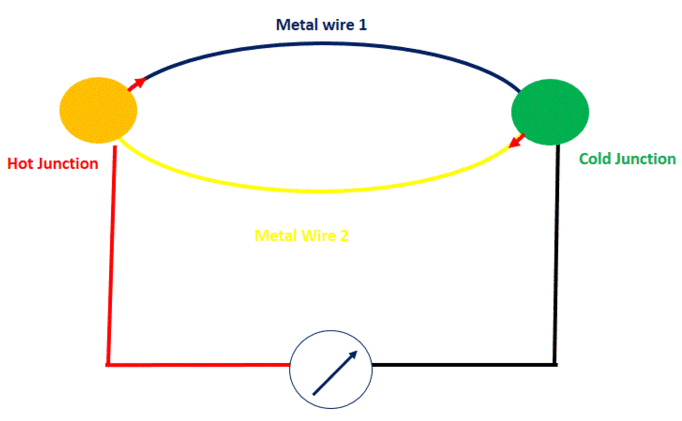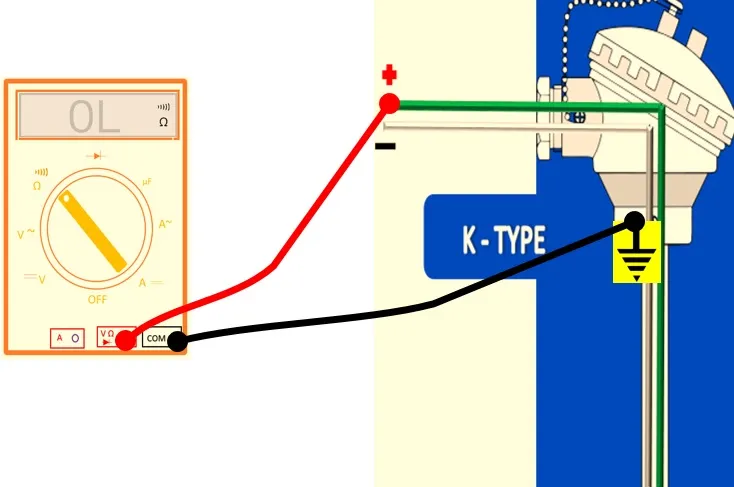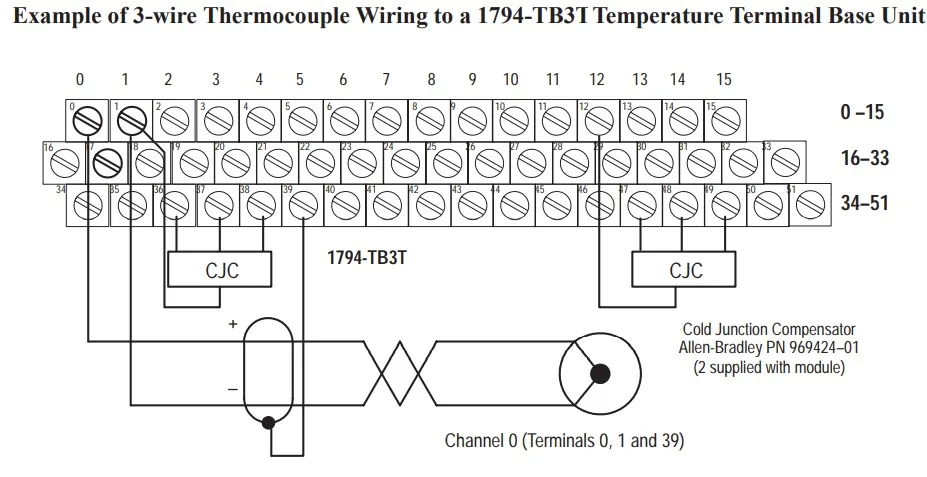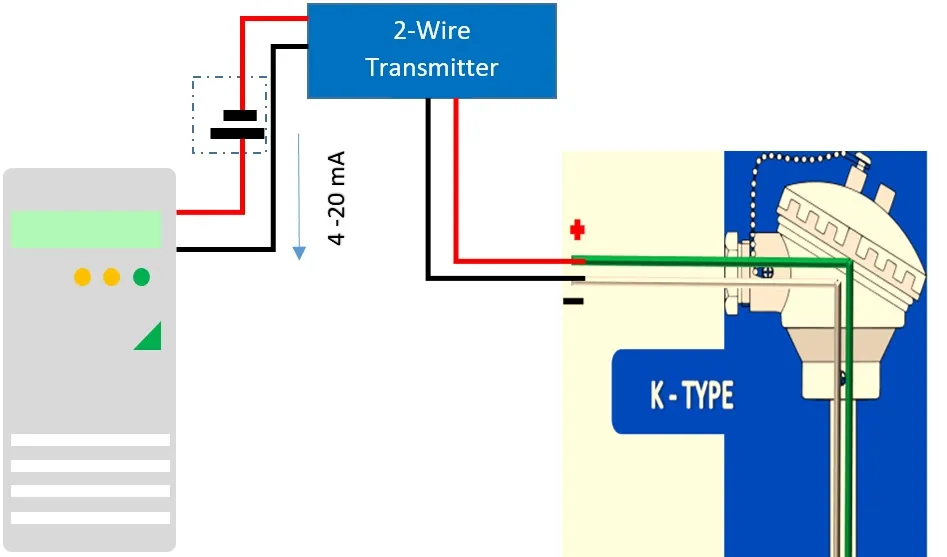what is role of thermocouple in industry?
Published on Mar08, 2023 | Category: basicthermocouple is an instruments which are used to measure a wide range of temperatures in industry. They are used in thermocouple used in industries where accuracy of temperature measurements requires in process and safety. there used in steel, glass, petrochemicals, and power generation, cement. thermocouple convert thermal energy into electrical energy. output of thermocouple is in Millivolt(mv). The output voltage of a thermocouple is typically measured using a voltmeter and multimeter. thermocouple have self powered capabilities no need to give external power supply. easy to interface with plc.
what is thermocouple working principle ?
basic working principle of thermocouple is based on Seebeck effect, Peltier effect and Thomson effect. The Seebeck effect was discovered by the German physicist Thomas Johann Seebeck . according to Seebeck effect "when two unlike metal joined together, if one one end was heated, an electromotive force (emf) is generated at the two junctions and current would flow through the circuit. This current is caused by the difference in the voltage generated between the hot and cold junctions due to the temperature difference."

Peltier effect for thermocouple:thermoelectric effect discovered by Jean Peltier.The Peltier effect is the opposite to Seebeck effect. Peltier effect, which involves the transfer of heat across a junction between two different materials. according to peltier effect "when current flows through a junction formed by two dissimilar metals or semiconductors than heat is absorbed at one junction and released at the second junction. both junction have different temperature one is cold another is hot.
Thomson effect for thermocouple: Thomson effect discovered by William Thomson (Lord Kelvin). It describes the heating or cooling of a material when an electric current is passed through it. Thomson effect occurs within a single material. The effect is often used in thermoelectric temperature sensors, as it can be used to measure small temperature differences with high accuracy. According to Thomson effect "the heating or cooling of a conductor take place when a current flows through it, due to the temperature difference along the conductor."
types of thermocouple
thermocouple made by two dissimilar metal. different type of thermocouple made from different combinations of metals and with different temperature ranges and accuracy levels. these two material properly enclosed and isolate it from the local atmosphere. thermocouple have following type.
- K Type thermocouple: K Type thermocouple most commonly thermocouple in industries have wide temperature range of -200°C to 1350°C. which made from nickel and chromium or nickel aluminum wires , this is the most common type of thermocouple and has a
- J Type thermocouple: J Type thermocouple used in low temperature range of -40°C to 750°C made from a of iron and constantan wires
- T Type thermocouple: T Type thermocouple generally used in laboratory has a range of -200°C to 350°C. made from a combination of copper and constantan wires.
- E Type thermocouple: E Type thermocouple used in cryogenics range of -200°C to 900°C. it is made from a combination of nickel-chromium and constantan wires.
- N Type thermocouple: N Type thermocouple used in aerospace and nuclear application range of -270°C to 1300°C made from a combination of nickel-chromium-silicon and nickel-silicon-magnesium wires.
- B Type thermocouple: B Type thermocouple made from a combination of platinum and rhodium wires,range of 0°C to 1800°C used in high temperature application.
- R Type thermocouples: R Type thermocouples used in high temperature such as Kiln, furnaces, material manufacturing etc. ranges of 0°C to 1600°C. made from a combination of platinum and rhodium wires.
- S Type thermocouples: s Type thermocouples used in high temperature such as Kiln, furnaces, material manufacturing etc.ranges of 0°C to 1600°C. made from a combination of platinum and rhodium wires.

how to test thermocouple?
output of Thermocouple is mV (millivolts) first check your thermocouple physically check damage or wear and tear, such as broken wires or insulation, which can also affect its performance.if every things is ok so follow these steps to check your thermocouple.
check millivolts(DC) of your thermocouple
check millivolts(DC) of your thermocouple by multimeter or voltmeter. cross check your millivolts reading with reference table of thermocouple and match obtain temperature with actual temperature.
 Of Your Thermocouple.webp)
check continuity of thermocouple
check continuity of thermocouple place multimeter probe in both wires of thermocouple If the thermocouple don't show continuity than it's not usable change thermocouple.

check resistance of thermocouple
check resistance of thermocouple if resistance reading is greater than 15 ohms so change your thermocouple. because thermocouple have low resistance. always remember low resistance is good for thermocouple.

ground test of thermocouple
in this test place your multimeter in continuity and connect one probe to thermocouple any one wire and connect second probe to ground if multimeter don’t show continuity than your is not function able.

remove thermocouple from circuit and Heat up the thermocouple and check voltage reading on the multimeter increases proportionally to temperature. if voltage reading does not change or is significantly different from what is expected, the thermocouple may be faulty and needs to be replaced.
what is Cold Junction Compensation?
Cold junction compensation (CJC) is a technique used in temperature measurement to correct for temperature variations at the point where a temperature sensor connects to the measuring instrument. we discuss on separate article.
How to connect thermocouple to a PLC input module
select proper module for connecting or wiring thermocouple to plc.input modules typically have specific ranges of compatible thermocouples, such as J-type or K-type, so check the specifications of the module to ensure that it supports the type of thermocouple you will be using.we discuss on separate article. some of the common Thermocouple Millivolt Input Module are
Allen-Bradley FLEX I/O thermocouple/mV modules are block transfer modules that interface analog signals with any Allen-Bradley programmable controllers that have block transfer capability

Horner APG Thermocouple Input Modules allow thermocouple temperature sensors to be directly connected to the PLC without external signal processing

if your wiring is long so use the 4-20mA transmitters.

siemens Analog input module (6ES7531-7KF00-0AB0).Thermocouple (TC) measuring type can be set per channe
